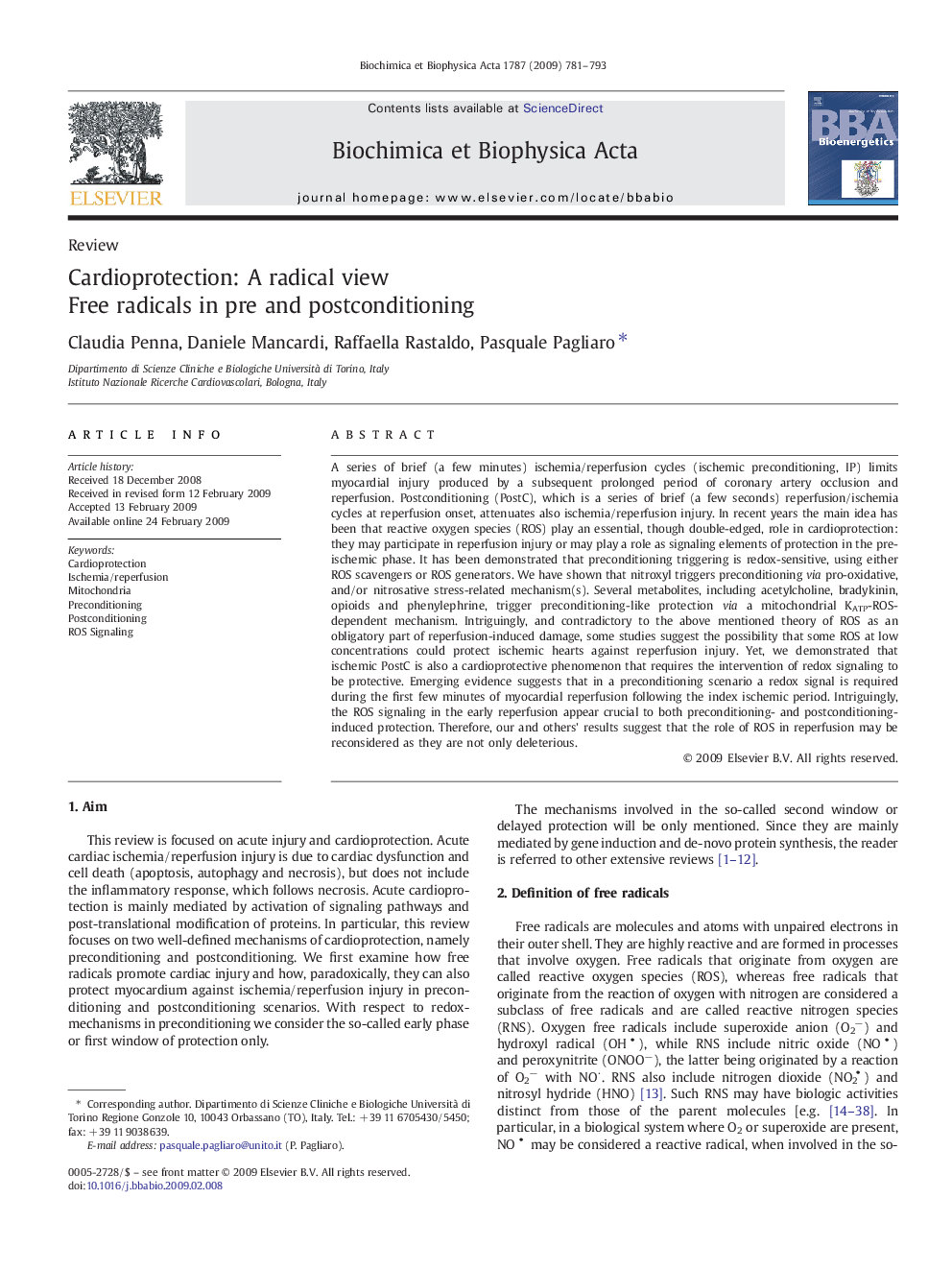| Article ID | Journal | Published Year | Pages | File Type |
|---|---|---|---|---|
| 1943150 | Biochimica et Biophysica Acta (BBA) - Bioenergetics | 2009 | 13 Pages |
A series of brief (a few minutes) ischemia/reperfusion cycles (ischemic preconditioning, IP) limits myocardial injury produced by a subsequent prolonged period of coronary artery occlusion and reperfusion. Postconditioning (PostC), which is a series of brief (a few seconds) reperfusion/ischemia cycles at reperfusion onset, attenuates also ischemia/reperfusion injury. In recent years the main idea has been that reactive oxygen species (ROS) play an essential, though double-edged, role in cardioprotection: they may participate in reperfusion injury or may play a role as signaling elements of protection in the pre-ischemic phase. It has been demonstrated that preconditioning triggering is redox-sensitive, using either ROS scavengers or ROS generators. We have shown that nitroxyl triggers preconditioning via pro-oxidative, and/or nitrosative stress-related mechanism(s). Several metabolites, including acetylcholine, bradykinin, opioids and phenylephrine, trigger preconditioning-like protection via a mitochondrial KATP-ROS-dependent mechanism. Intriguingly, and contradictory to the above mentioned theory of ROS as an obligatory part of reperfusion-induced damage, some studies suggest the possibility that some ROS at low concentrations could protect ischemic hearts against reperfusion injury. Yet, we demonstrated that ischemic PostC is also a cardioprotective phenomenon that requires the intervention of redox signaling to be protective. Emerging evidence suggests that in a preconditioning scenario a redox signal is required during the first few minutes of myocardial reperfusion following the index ischemic period. Intriguingly, the ROS signaling in the early reperfusion appear crucial to both preconditioning- and postconditioning-induced protection. Therefore, our and others' results suggest that the role of ROS in reperfusion may be reconsidered as they are not only deleterious.
